The Lowdown
If you like a game that has a great cast, decently fun combat, and in my opinion, a wonderful character arc revolving around finding hope amidst the ashes, give Days Gone a look.
Overall
Pros
- Awesome cast and main character
- Simple but satisfying combat, up to a point
- Engaging progress system that is clear and rewards you adequately
- The motorcycle goes vroom and goes fast
Cons
- A slew of nitpicks like too many cutscenes, repetitive combat encounters, and resource grinding can be a pain
I’m going to come clean; I bought this game because I thought I’d hate it. Out of the box, Days Gone read as “an open world game with shallow mechanics that tried to be too badass and edgy.” With bikers vs. cultists vs. bandits in a zombie apocalypse as the setting, can you blame me? For the first two hours, the game did nothing to suppress my acid reflux, but the more I engaged with it, the more pleasantly surprised I became.
I beat this game in 50 hours, and here are my thoughts.
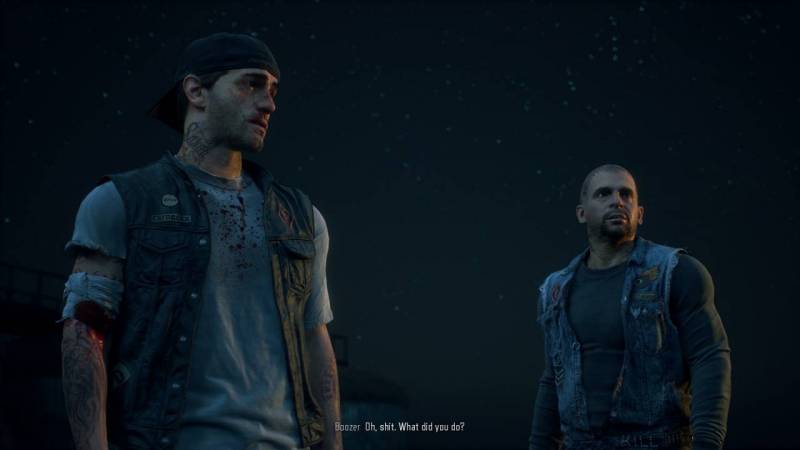
POV: Me talking to myself after buying this game.
The Days Gone Narrative
In broad strokes, you play Days Gone as Deacon St. John, a tough and gritty biker gang survivor who has become understandably more jaded due to losing his wife when the world went to hell.
The setting is the boonies of Oregon, and if you thought living there wasn’t bad enough, a virus that causes people to go feral and cannibalistic has destroyed society as we know it.
Since nobody wants to use the word “zombies,” this game calls them “freakers.” Think the fast zombies from “28 days later,” and you’ve pretty much got the gist.
At the start of your story, Deacon and his gangmate/best friend Boozer have a dangerous run-in with a doomsday cult called the “Rippers,” who proceed to take a blowtorch to Boozer’s arm, you know, as civilized people would.
Your initial exploits revolve around getting him the medical attention he needs while doing supply-run jobs for the various settlements and their leaders in the area.
The desperation to save his friend’s life puts Deacon in increasingly dangerous situations to regain the trust of old allies who can lend a hand, a testament to the fact burning bridges when you leave a community is generally a bad idea.
Other huge Days Gone storylines include Deacon hunting for the elusive NERO organization (basically a militarized FEMA/CDC that is still conducting operations in the post-apocalypse), investigating what happened the night Deacon put his wife on an evacuation chopper, and discovering new methods to mow down the monsters.
As you interact with more camps (whether friend or foe), the fog of war clears to reveal your classic points of interest. Quest markers tend to originate from safe zones where you can restock on fuel and ammo, but there are bandit camps to clear, freaker nests to eradicate, random survivors to rescue, and more.
Days Gone is primarily a story-driven game, however, with the progression of each storyline unlocking other main missions and, most ultimately, providing access to a custom skin for your bike, a crafting recipe, or a new weapon upon completion.
Rather than being overwhelming, I think the developers incorporated a very clear UI that showed progress succinctly while leaving you excited for what else you could uncover.
Despite some pacing issues, around the 48-hour mark, I found myself sad that we were closing the book on Deacon. I was really rooting for the guy, and without spoilers, his transformation as a character moved me a little.
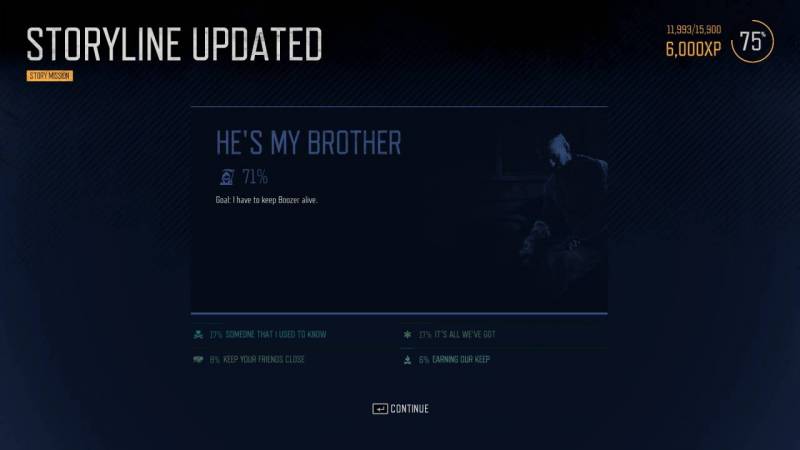
Numbers and little icons play well with my smooth brain
While the plot of Days Gone was a bit predictable and slightly cringe at times, I definitely enjoyed most of it. There are cutscenes all over the place, which I don’t particularly appreciate, but thankfully, Deacon is voiced/portrayed by Sam Witwer (the voice of Darth Maul) and his work in this game is magnificent.
The sheer range of emotions Witwer is asked to portray is staggering; keep an eye out for when he must quickly transition between indignant rage to illuminating sadness.
Especially in this medium, making that switch can be a challenge for even the most skilled of actors, but Witwer made it convincing enough that I attribute his performance to enhancing the narrative experience.
As for Days Gone’s supporting cast, generally decently done. Some are unabashed caricatures while others have more nuance, but I think they are all written and voiced well enough that you can truly grasp that they are, each in their own manner, reacting to the end of the world and simply surviving the best they can.
Seeing this underlying thread connect literally every core character was interesting to me because while you might hate them, you could also see how they could have become that way in the face of such horror.
As Deacon put the knife to a particularly loathsome twerp towards the end of the story, I could only imagine that if circumstances were different, how easily Deacon may have done some of the things his victim had.
As an aside, Boozer is also endearing. He’s my favorite, and I’d 100% be his friend.

NGL, This Scene Made Me Laugh
Days Gone Core Mechanics
From the jump, Days Gone is very similar in terms of gameplay loop to titles like Horizon Zero Dawn (read my review here). You clear out the objectives on the map, engage with hostile “fauna,” build up your standing with factions to unlock more rewards, and engage with the narrative and skill progression.
This is not a negative, just a reminder that, by and large, there is no reinvention of the wheel here.
Days Gone runs relatively smooth in terms of player mobility and traversal.
The world strikes a good balance of seeming large without taking ages to navigate, and Deacon is pretty easy to maneuver. He wasn’t as nimble as HZD’s Aloy was, but I didn’t feel like he was wading through the swamp, either.
The only gripe I have is that switching between shooting and sprinting is clunky on a keyboard, which led to my demise more than a few times. This probably wouldn’t be as much of an issue on a controller, but that’s not what I use.
One thing I’d recommend is to adjust the FOV slider in the menu, as the default setting made me feel like I didn’t have adequate peripheral vision. Maybe it’s just me, but I’d rather get that split second of early warning of an approaching enemy as opposed to a detailed view of Deacon’s ass.
As opposed to HZD, where you would be asked to scale cliff sides and ruins, Days Gone places emphasis on lateral traversal across the map, aka speeding from one point of interest to the other.
Your core transportation is a trusty motorcycle that you can upgrade through the story, and while it may seem boring, this is something you 100% should do, as the bike is integral to the game.
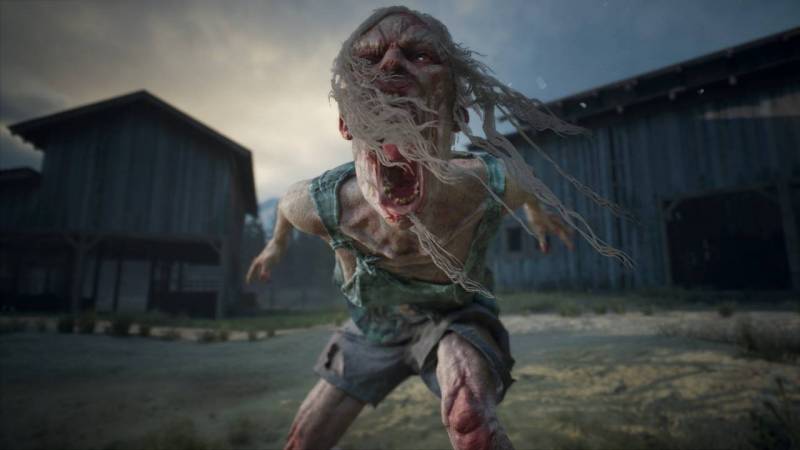
Example of “Hostile Fauna”
For starters, the Days Gone Fast Travel system isn’t free; it requires you to have a certain amount of petrol in the tank to travel there offscreen.
If you run out of fuel on the road, you will not be able to use your bike until you locate a jerry can or a gas station. The stations are marked on your map, and the cans always respawn in the same spots upon refresh, but it can be potentially lethal if you’re not careful while traversing by foot.
You also have to be within a short distance of the vehicle to use the Fast Travel system, meaning you’d better take that bike with you.
You could find yourself pushing the thing around for a solid 10 minutes trying to find fuel, praying the sounds you hear in the underbrush are simply figments of an overactive imagination.
The bike also serves as your “quicksave” hub, making it all the more important to be constantly accessible.
Death can come at you fast in Days Gone, whether by gunshot, bite wound, or simply falling off a cliff. For example, I lost 25 minutes of progress by forgetting to make sure I saved before throwing an errant pipe bomb that landed right under my crotch. In my defense, I was panicking at the time.
Thirdly, the bike is your main means of escape from danger, as sprinting costs stamina. Sometimes the best strategy in the face of a horde of rabid animals is to simply not be there when they arrive.
Stamina is finite and takes a while to regenerate, whereas the freakers will follow you relentlessly unless you get out of their range…which leads me to my next point.
One of the things I enjoyed the most about Days Gone is just how lethal everything is. Now, that sentence may sound like it was lifted from the manifesto of a disgraced police officer, but hear me out.
This game is set after society as we know it has collapsed into a steaming pile of hot garbage, and you play as “just a guy.”
Not the chosen one, not some super soldier, just “a guy.”
You are SUPPOSED to feel the cold hand of death gently fingering you every waking moment you have the audacity to breathe.
In some titles, by the end of the story, the player is so powerful that they never truly feel like they are in peril at all, which is totally fine. I’m merely pointing out that it is refreshing to know that even with 20-30 levels/skills later, I’m still 3 seconds away from dying at any time.
The “freaker” enemies come in variations, but all have a few things in common: they are faster, stronger, and tougher than you, and what’s more, they vastly outnumber you.
In small groups (2-10), you can likely handle yourself, but they can number literally hundreds. These hundreds operate with pack tactics and are very responsive to sound. As you might expect, killing things makes a lot of noise, so prolonged combat (especially with guns) will draw every available enemy in the area crashing onto your head.
In all my hours of playing this game, I was unable to take a satisfactory screenshot of the experience of being set upon by a tide of freakers from all directions because I was too busy running for my goddamn life to angle the camera properly.
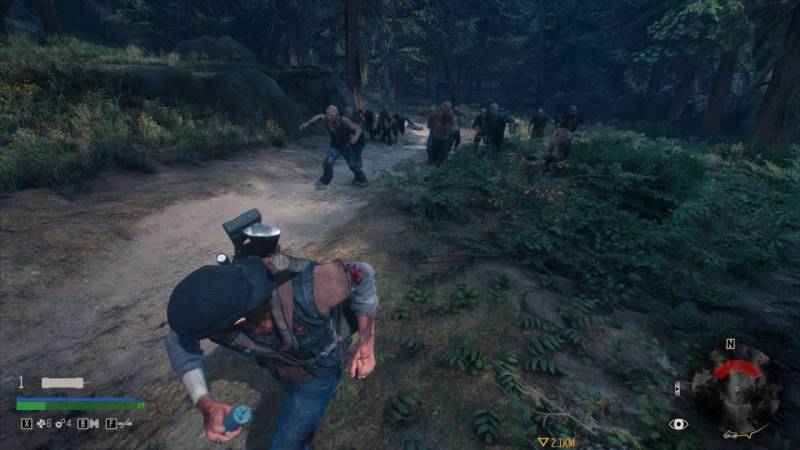
Me, Running For My Life
As you level up and find upgrades, your melee attacks get stronger, your “slow down time” meter gets larger, you gain more health, etc, but at the end of the day, the rule of the realm is this: you get swarmed, you’re going to die.
As there is no functional armor you can equip, speed, traps, stealth, and a steady shooting arm are among the tools you have at your disposal to make sure that doesn’t happen.
This is where I put on my “don’t be a filthy casual” cap (and excuse me for doing so), but I strongly recommend investing in the “boring skills” first.
For example, harvesting more meat from animal carcasses or collecting more plant matter per action may not sound sexy, but I found that the true path to increasing your combat potential and, subsequently, your ability to survive came from the weaponry you have access to rather than the skill tree.
At the start, you have a cruddy AK-47 and a pea shooter pistol; you’ll notice quite quickly that even clearing 50 enemies is a challenge with that loadout as your margin for error is so small due to the damage and amount of ammo you have access to.
Later, by comparison, you can get a literal heavy machine gun that holds 100 rounds at a time, a massive shotgun that shreds anything in front of you, and a little uzi that somehow has more crowd control power than the aforementioned shotgun.
At this point, that group of 50 becomes a pitstop as opposed to an obstacle. Sure, having “slow-mo time” not deplete while reloading is helpful, but it is exponentially more valuable when your weapon can capitalize on the small advantages your skills create rather than doing a whole lot of nothing for a longer span of time.

If you want to take on that without proper equipment, good luck!
So how does this relate to taking the “unsexy skills” first?
Well, the best weapons in Days Gone are locked behind either storyline completion or “trust tiers” in settlements. To put it simply, trust tiers measure how much you’ve done for a camp. To increase it, you can turn in freaker ears, complete missions, and rescue survivors.
But especially at the beginning, when you have crummy equipment, the best way to do this is by turning in animal meat and plants foraged from the environment. It’s the safest way to make a buck, and being able to quadruple the rate at which you can acquire “trust” will go a long way in reducing time spent getting your ass kicked, as there will come a time you will simply not be able to take on 50 enemies with your low tier weapon load out.
When it comes to other methods of enemy disposal, stealth is nothing really to speak of. The same concept as popping into bushes, causing distractions, and stabbing things in the back. They even have some of the trademark “sneak around and don’t get caught because you’ll immediately fail” missions, but thankfully they aren’t too difficult, so you can get back to having fun ASAP.
One thing that’s really fun is some of the gadgets at your disposal. Guns feel meaty, molotovs are efficient, and proximity mines are straight-up satisfying.
The one I enjoyed the most was actually the crossbow because ammo was easy to craft, and the variations include little tricks like an explosive bolt or a bolt that turned an enemy hostile to everyone around them. Silent but deadly, just the way I like it.
Anyway, Days Gone’s arsenal primarily revolves around fire, explosions, and penetrative rounds, but the few options they had were done well.
Days Gone Graphics and Sound
My computer isn’t cutting edge anymore, but it ran the game reasonably well. I only experienced performance drops in a few situations and they were mainly textures becoming less detailed.
I was reasonably impressed that even while being chased by at least 80 freakers, the game still puttered along smoothly. The Oregonian countryside is also decent to look at, although I found that it looked at its best when you were speeding along on the motorcycle or looking at a large expanse of land from a vantage point.
Up close, it was serviceable but unremarkable. No idea if that was an actual design choice or if I’m just imagining it, but that’s how I felt, and you’re reading my review.
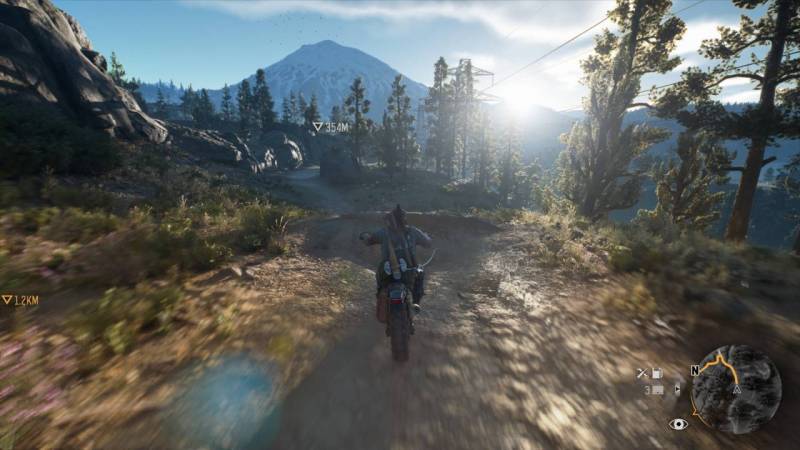
Gorgeous
I’ve already touched on how I felt the Days Gone cast performed, but the ambient overworld sounds should be praised as well.
Playing this game with headphones on really made me feel immersed; I could hear from which direction and how close an approaching enemy was.
Sometimes this can be unsettling because you’ll hear the growling of a mountain lion or a freaker but have no clear idea where it may be coming from.
Gunshots rang loud and slowly faded, and the motorcycle revved realistically, but what caught me most off guard was the sound of Deacon ramming freakers on the road; to my ears, it sounded impactful and satisfying.
One thing I’ll say is that the Days Gone mixing could have been better. As mentioned, this is a cutscene-heavy game, and it was really strange to sometimes hear the background noises and dialogue come through louder than the main character’s conversation.
It more than once managed to ruin what should have been a climatic or cathartic moment.
However…
Days Gone will not receive an outstanding mark. Now you may be curious as to why, as I’ve spent about 2000 words so far saying it’s pretty decent.
If I had to spell it out succinctly, the port of the game I played had no major flaw, in my opinion; but was bogged down by the weight of small nitpicks that ultimately detracted from the experience.
Just to list a few:
- The game did a lot more telling rather than showing.
- While the narrative was good, the pacing of missions was not: there’d be times I had no missions available and others when I’d suddenly get bombarded with 3 — all accompanied by dialogue with a side character. Someone would slam the walkie-talkie down in annoyance, then call me back immediately with a job after “cooling off,” taking you out of the immersion.
- The need for excessive resource grinding would have been infuriating if I didn’t invest my skills properly.
- No meaningful epilogue or reason to engage post-game after missions are done; you can go kill freaker hordes around the map if you want, but that’s not my style.
- Every combat encounter plays out roughly the same with the trifecta of shoot, stab, and blow up. This is common in a lot of games but in Days Gone, when you’re fighting enemies with minimal personality, this gets tedious.
- Stupid stealth missions that nobody likes
There are more but you get my point. Days Gone has challenges and a New Game+ mode (where you play the whole game again but keep your previous playthrough skills), but I felt no interest in engaging with any of that.
I wish for an open-world game, there was more reason to keep exploring besides wanton carnage.
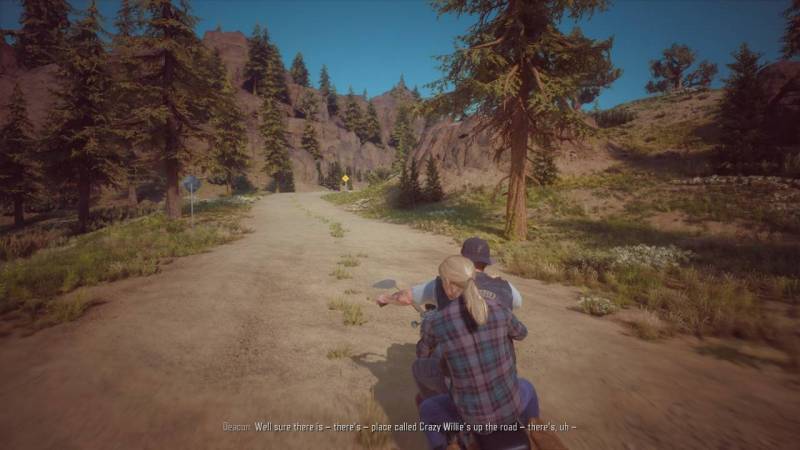
When the world wasn’t stained crimson
Days Gone Final Thoughts
I had a good time with Days Gone. Again, I went in with the expectation of hating it and found myself drawn into the character arc of Deacon St. John, and then being drawn into just about everything else. I’ll probably never play it again, but it was not a waste of my time in the slightest, and I’m glad I took the chance.
If you like a game that has a great cast, decently fun combat, and in my opinion, a wonderful character arc revolving around finding hope amidst the ashes, give Days Gone a look.
Days Gone is available from Steam, Epic Games, Playstation Store, and other retailers.
Developers/Publishers:
Bend Studio/Sony Interactive Entertainment
Source: Personal Purchase
What I Like: Awesome cast and main character; Simple but satisfying combat, up to a point; Engaging progress system that is clear and rewards you adequately; The motorcycle goes vroom and goes fast
What Needs Improvement: A slew of nitpicks like too many cutscenes, repetitive combat encounters, and resource grinding can be a pain
